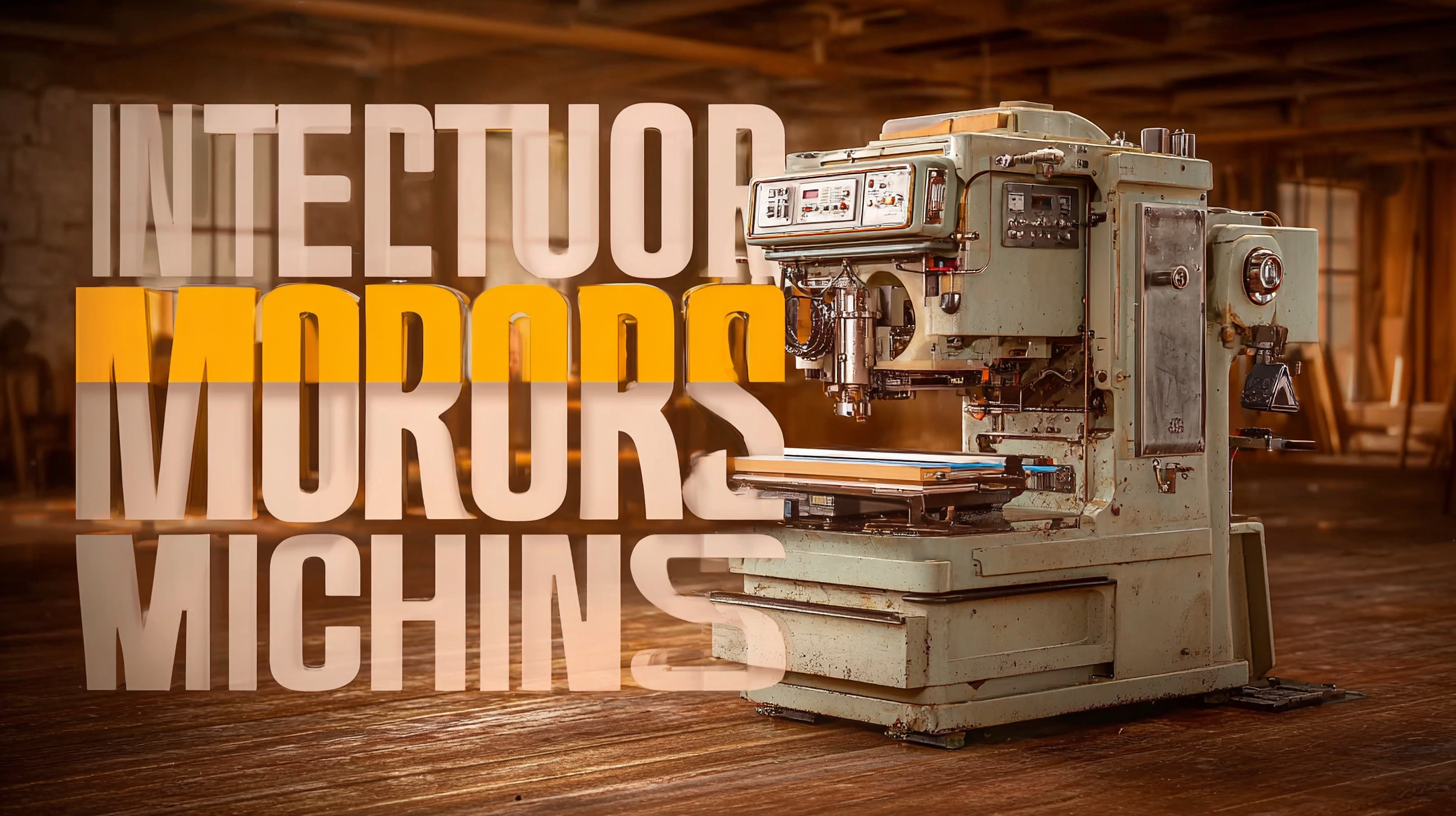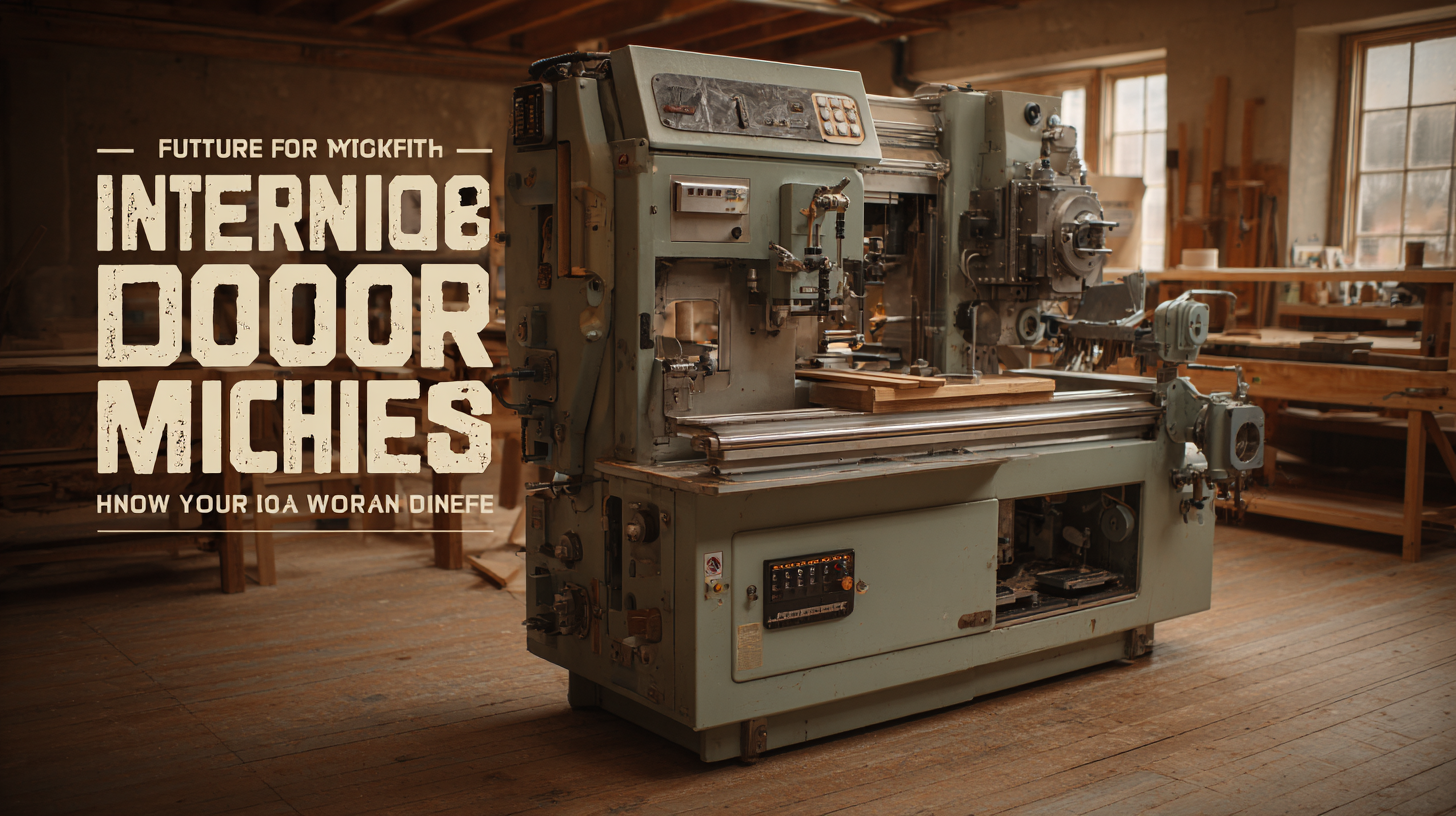Future-Proofing Your Workshop: A 2025 Guide to the Best Interior Door Machines and Tech Innovations
In the ever-evolving world of manufacturing, the demand for advanced machinery is paramount, especially in the production of interior doors—a segment projected to grow significantly, with the global interior doors market expected to reach approximately $31 billion by 2025, as highlighted by industry forecasts. As manufacturers prepare to future-proof their workshops, the integration of cutting-edge Interior Door Machines becomes critical for meeting consumer demands for quality, efficiency, and sustainability. Various technological innovations, such as automation and smart manufacturing tools, are revolutionizing the way interior doors are produced, enhancing precision and reducing waste.

This guide will explore the best interior door machines available in 2025, showcasing industry applications and the types of innovations that are shaping the future of door manufacturing, ensuring that your workshop remains competitive in an increasingly tech-driven landscape.
Choosing the Right Interior Door Machines: Key Features to Consider
When selecting interior door machines for your workshop, it's essential to focus on key features that can significantly enhance efficiency and output quality. According to a recent report by Market Research Future, the woodworking machinery market is projected to grow at a CAGR of 4.5% by 2025. This growth is driven by advancements in technology, which have introduced smarter, more automated machines that streamline the door manufacturing process. Features such as programmable settings and digital interface controls allow operators to customize tasks quickly, reducing setup time and minimizing waste.
Another crucial aspect to consider is the machine's precision and versatility. The latest models are equipped with laser-guided systems and integrated software that ensure accurate cuts and finishes. A study by the Woodworking Machinery Industry Association highlights that efficiency can improve by 20% when using machines with high-precision features, translating to increased productivity and cost savings. Additionally, look for machines that offer multi-function capabilities, enabling users to switch between tasks such as cutting, sanding, and shaping without needing multiple machines, thereby optimizing floor space and reducing overhead costs.
Essential Tech Innovations Shaping the Future of Door Manufacturing
As the door manufacturing industry evolves, innovative technologies are paving the way for enhanced efficiency and precision. Essential tech innovations, such as automation, advanced materials, and IoT integration, are not just improvements; they are essential for future competitiveness. According to a report from MarketsandMarkets, the global market for automated door manufacturing is projected to grow from $3.1 billion in 2020 to $5.6 billion by 2025, indicating a renewed focus on smart solutions.
One standout development is the use of computer numerical control (CNC) machines, which offer unrivaled accuracy in crafting doors of various designs and materials. This technology reduces waste and significantly lowers production costs. Additionally, the incorporation of artificial intelligence (AI) in manufacturing processes aids in predictive maintenance and quality control, resulting in up to a 30% reduction in downtime based on industry studies. As manufacturers leverage these innovations, the potential for customizable, high-quality doors that meet diverse consumer demands continues to rise, making the investment in these technologies not just beneficial, but essential for staying ahead in the market.
Navigating Industry Certifications: Ensuring Compliance and Quality
As the workshop industry continues to evolve, navigating industry certifications has become crucial for ensuring compliance and maintaining high-quality standards. With increasing regulations across sectors such as automotive, healthcare, and manufacturing, workshops must stay ahead of the curve by adopting innovative technologies that facilitate meeting these stringent requirements. This not only aids in compliance but also enhances operational efficiency.
A notable development is the adoption of cloud-based solutions, which streamline submission processes and quality management. These platforms are redefining how companies document and manage certification processes, allowing for real-time tracking and improved collaboration among stakeholders. By integrating these technologies into their workflow, workshops can ensure they meet regulatory demands while also reducing the risks associated with non-compliance. This approach fosters a culture of continuous improvement, essential for any workshop aiming to thrive in a competitive landscape.

Integrating Automation in Your Workshop: Benefits and Best Practices
As we look toward 2025, integrating automation in workshops emerges as a critical strategy for enhancing efficiency and productivity. According to a recent report by the Manufacturing Technology Industry Association (MTIA), the adoption of automated systems can improve overall operational efficiency by as much as 40%. These advancements not only streamline workflow but also reduce labor costs, allowing businesses to allocate resources more strategically.
Incorporating sophisticated interior door machines equipped with automated technology fosters precision and consistency in production processes. A study published in the Journal of Automated Manufacturing indicates that automated machinery reduces the margin of error by up to 50%, which is vital in an industry where quality and finishes are crucial. To maximize these benefits, workshops should focus on implementing best practices, such as investing in training for staff to operate sophisticated tools and integrating smart inventory management systems that tie into automated machinery. By embracing these innovations, workshops can not only future-proof their operations but also position themselves competitively in a rapidly evolving market.
Future Trends: What to Expect in Door Production Technology by 2025
As we approach 2025, the door production technology landscape is poised for significant transformation. According to industry forecasts, the double-door market in France is expected to grow significantly, reaching a market size of 5.454 billion by 2035, with a compound annual growth rate (CAGR) of 5.68% from 2025 to 2035. This growth indicates an increasing demand for innovative door solutions that cater to changing consumer preferences and design trends, reflecting broader shifts in construction and interior design.
Moreover, advancements in manufacturing techniques, particularly within the synthetic biology sector, are set to redefine material development for interior doors. Reports suggest that companies will increasingly integrate biocompatible materials and sustainable manufacturing processes into their production lines, enhancing both the functionality and environmental profile of new door offerings. As identified in recent strategic technology trend analyses, automation and smart technologies will play crucial roles, enabling manufacturers to enhance operational efficiency and product customization, ultimately reshaping the interior door market by 2025.

